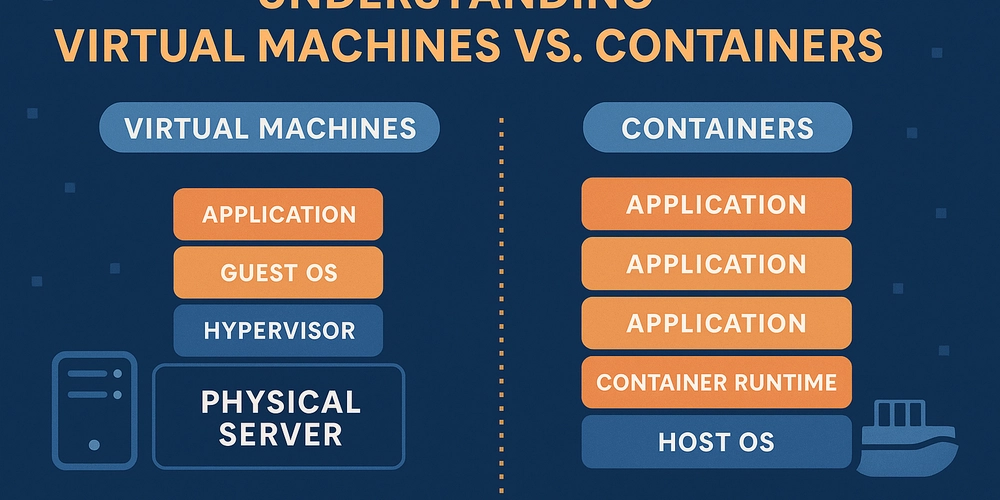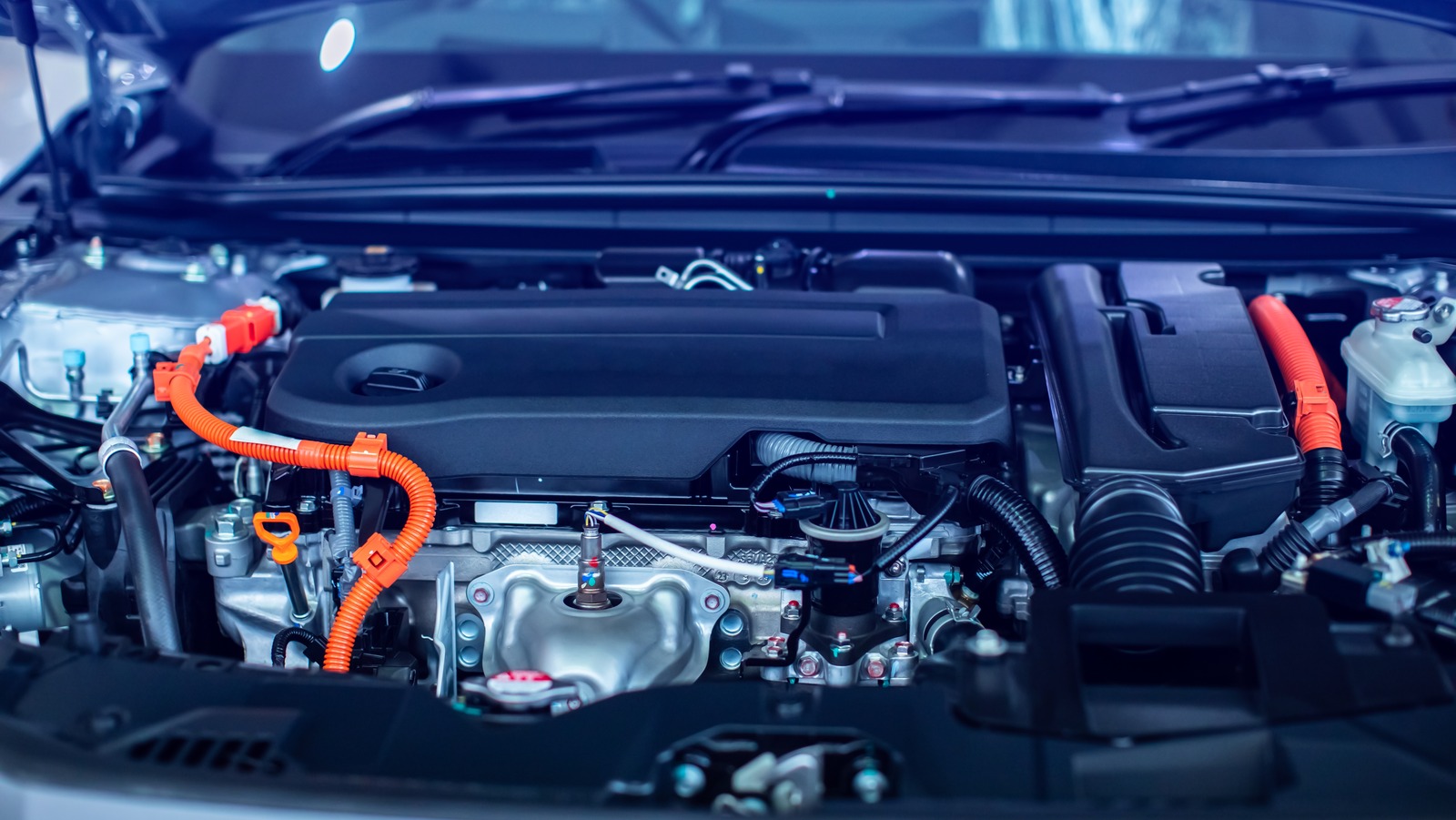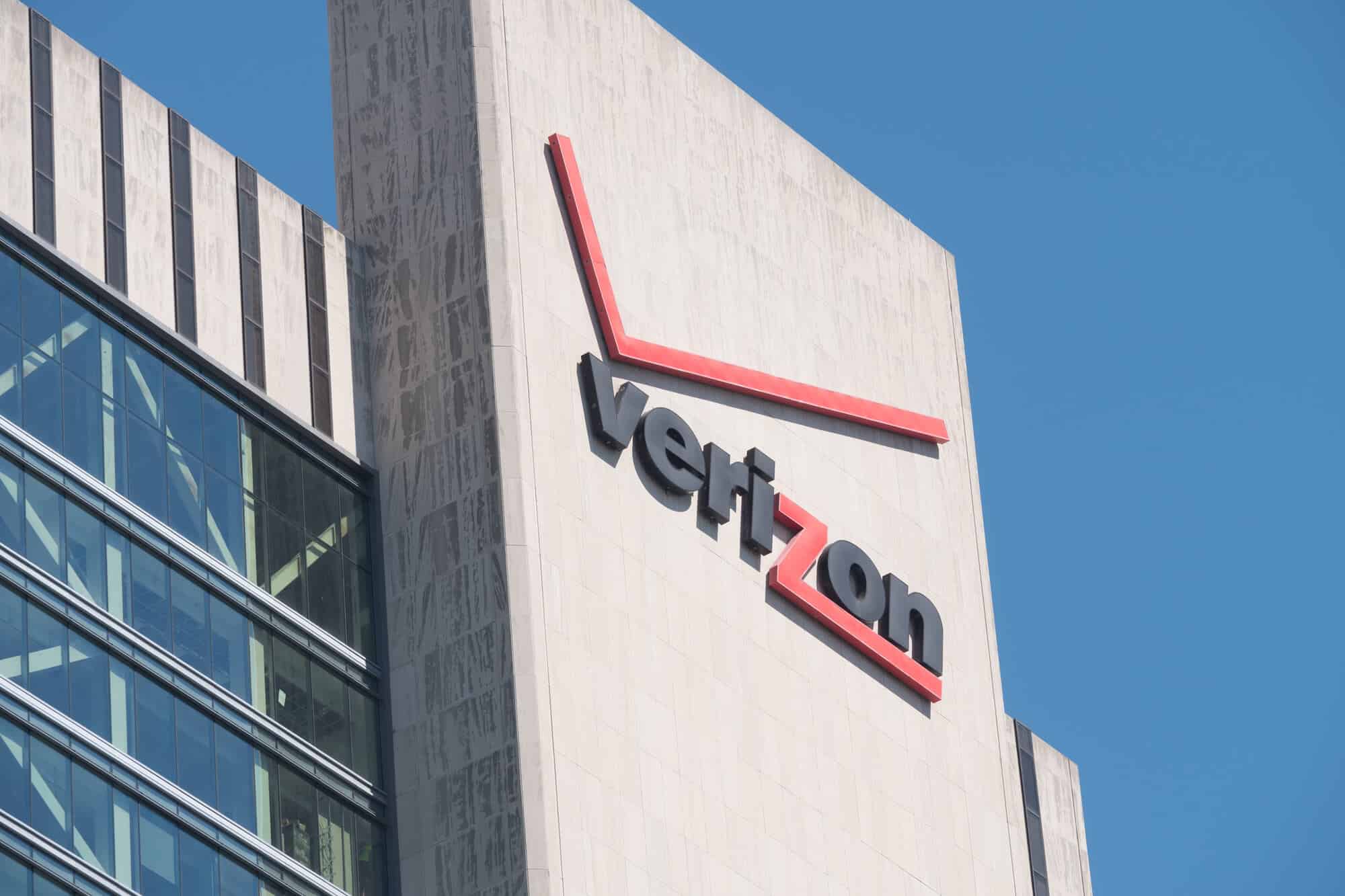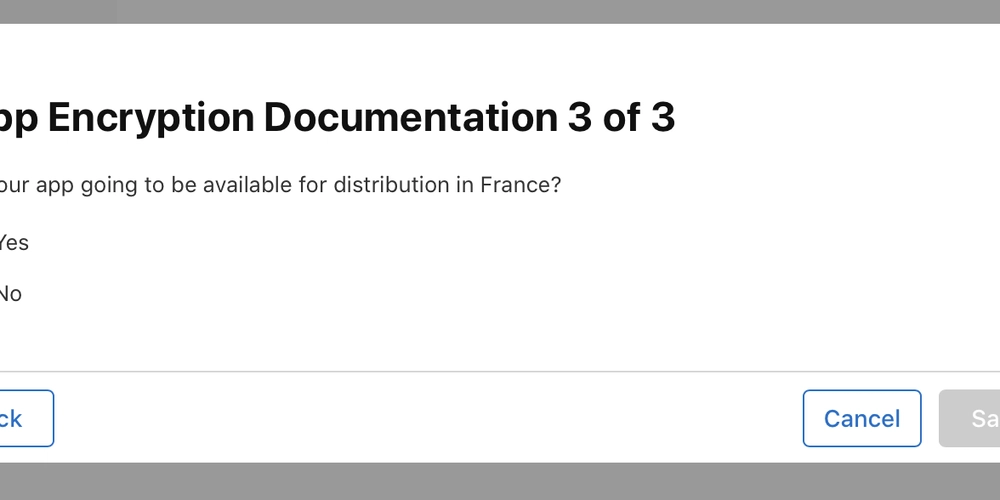Comprehensive Hardware Requirements Report for DeepSeek R1
Executive Summary DeepSeek R1 is a state-of-the-art large language model (LLM) designed for advanced reasoning capabilities. With 671 billion parameters (37 billion activated per token) using a Mixture of Experts (MoE) architecture, it represents one of the most powerful open-source AI models available. This report provides comprehensive hardware requirements for deploying DeepSeek R1 in various environments, covering minimum requirements, recommended specifications, scaling considerations, and detailed cost analysis. The model is available in multiple variants, from the full 671B parameter version to distilled models as small as 1.5B parameters, enabling deployment across different hardware tiers from high-end servers to consumer-grade GPUs. This report helps organizations make informed decisions about hardware investments for DeepSeek R1 deployments based on their specific use cases and budget constraints. Model Architecture and Variants DeepSeek R1 Architecture DeepSeek R1 is built on a sophisticated architecture with the following key characteristics: Parameter Count: 671 billion parameters total, with 37 billion activated per token Architecture Type: Mixture of Experts (MoE) Context Length: 128K tokens Transformer Structure: 61 transformer layers First 3 layers: Standard Feed-Forward Networks (FFNs) Remaining 58 layers: Mixture-of-Experts (MoE) layers Attention Mechanism: Multi-Head Latent Attention (MLA) in all transformer layers Context Window Extension: Two-stage extension using the YaRN technique Additional Feature: Multi-Token Prediction (MTP) Available Model Variants DeepSeek offers several distilled versions with reduced parameter counts to accommodate different hardware capabilities: Model Version Parameters Architecture Base Use Cases DeepSeek-R1 (Full) 671B MoE Enterprise-level reasoning, complex problem-solving DeepSeek-R1-Distill-Llama-70B 70B Llama Large-scale reasoning tasks, research DeepSeek-R1-Distill-Qwen-32B 32B Qwen Advanced reasoning, business applications DeepSeek-R1-Distill-Qwen-14B 14B Qwen Mid-range reasoning capabilities DeepSeek-R1-Distill-Qwen-7B 7B Qwen General-purpose reasoning tasks DeepSeek-R1-Distill-Llama-7B 7B Llama General-purpose reasoning tasks DeepSeek-R1-Distill-Qwen-1.5B 1.5B Qwen Basic reasoning, edge deployments Minimum Hardware Requirements The minimum hardware requirements vary significantly based on the model variant and quantization level. Below are the absolute minimum requirements to run each model variant: Full Model (DeepSeek-R1, 671B parameters) GPU: Multi-GPU setup, minimum 16x NVIDIA A100 80GB GPUs VRAM: Approximately 1,500+ GB without quantization CPU: High-performance server-grade processors (AMD EPYC or Intel Xeon) RAM: Minimum 512GB DDR5 Storage: Fast NVMe storage, 1TB+ for model weights and data Power Supply: Enterprise-grade redundant PSUs, 5kW+ capacity Cooling: Data center-grade cooling solution Networking: High-speed interconnect (100+ Gbps) DeepSeek-R1-Distill-Llama-70B GPU: Multiple high-end GPUs, minimum 4x NVIDIA A100 40GB or equivalent VRAM: 181GB for FP16, ~90GB with 4-bit quantization CPU: Server-grade multi-core processors RAM: Minimum 256GB Storage: Fast NVMe SSD, 200GB+ for model weights DeepSeek-R1-Distill-Qwen-32B GPU: Multiple GPUs, minimum 2x NVIDIA A100 80GB or equivalent VRAM: 65GB for FP16, ~32GB with 4-bit quantization CPU: High-end server-grade processors RAM: Minimum 128GB Storage: NVMe SSD, 100GB+ for model weights DeepSeek-R1-Distill-Qwen-14B GPU: High-end GPU, minimum NVIDIA A100 40GB or multiple RTX 4090 VRAM: 28GB for FP16, ~14GB with 4-bit quantization CPU: High-performance multi-core (16+ cores) RAM: Minimum 64GB Storage: SSD, 50GB+ for model weights DeepSeek-R1-Distill-Qwen/Llama-7B GPU: Consumer-grade GPU, minimum NVIDIA RTX 3090/4090 (24GB VRAM) VRAM: 14GB for FP16, ~7GB with 4-bit quantization CPU: Modern multi-core (12+ cores) RAM: Minimum 32GB Storage: SSD, 30GB+ for model weights DeepSeek-R1-Distill-Qwen-1.5B GPU: Entry-level GPU, minimum NVIDIA RTX 3060 (12GB VRAM) VRAM: 3.9GB for FP16, ~2GB with 4-bit quantization CPU: Modern multi-core (8+ cores) RAM: Minimum 16GB Storage: SSD, 10GB+ for model weights Recommended Hardware Specifications While the minimum requirements will allow the models to run, the following recommended specifications will provide optimal performance for production deployments: Enterprise-Level Deployment (Full Model) GPU: Optimal: 8x NVIDIA H200/Blackwell GPUs Alternative: 16x NVIDIA A100 80GB GPUs CPU: Dual AMD EPYC 9654 or Intel Xeon Platinum 8480+ RAM: 1TB+ DDR5 with ECC Storage: 4TB+ NVMe PCIe 4.0/5.0 SSDs in RAID configuration Additional 20TB+ high-speed storage for datasets Networking: 200Gbps InfiniBand or eq

Executive Summary
DeepSeek R1 is a state-of-the-art large language model (LLM) designed for advanced reasoning capabilities. With 671 billion parameters (37 billion activated per token) using a Mixture of Experts (MoE) architecture, it represents one of the most powerful open-source AI models available. This report provides comprehensive hardware requirements for deploying DeepSeek R1 in various environments, covering minimum requirements, recommended specifications, scaling considerations, and detailed cost analysis.
The model is available in multiple variants, from the full 671B parameter version to distilled models as small as 1.5B parameters, enabling deployment across different hardware tiers from high-end servers to consumer-grade GPUs. This report helps organizations make informed decisions about hardware investments for DeepSeek R1 deployments based on their specific use cases and budget constraints.
Model Architecture and Variants
DeepSeek R1 Architecture
DeepSeek R1 is built on a sophisticated architecture with the following key characteristics:
- Parameter Count: 671 billion parameters total, with 37 billion activated per token
- Architecture Type: Mixture of Experts (MoE)
- Context Length: 128K tokens
-
Transformer Structure: 61 transformer layers
- First 3 layers: Standard Feed-Forward Networks (FFNs)
- Remaining 58 layers: Mixture-of-Experts (MoE) layers
- Attention Mechanism: Multi-Head Latent Attention (MLA) in all transformer layers
- Context Window Extension: Two-stage extension using the YaRN technique
- Additional Feature: Multi-Token Prediction (MTP)
Available Model Variants
DeepSeek offers several distilled versions with reduced parameter counts to accommodate different hardware capabilities:
| Model Version | Parameters | Architecture Base | Use Cases |
|---|---|---|---|
| DeepSeek-R1 (Full) | 671B | MoE | Enterprise-level reasoning, complex problem-solving |
| DeepSeek-R1-Distill-Llama-70B | 70B | Llama | Large-scale reasoning tasks, research |
| DeepSeek-R1-Distill-Qwen-32B | 32B | Qwen | Advanced reasoning, business applications |
| DeepSeek-R1-Distill-Qwen-14B | 14B | Qwen | Mid-range reasoning capabilities |
| DeepSeek-R1-Distill-Qwen-7B | 7B | Qwen | General-purpose reasoning tasks |
| DeepSeek-R1-Distill-Llama-7B | 7B | Llama | General-purpose reasoning tasks |
| DeepSeek-R1-Distill-Qwen-1.5B | 1.5B | Qwen | Basic reasoning, edge deployments |
Minimum Hardware Requirements
The minimum hardware requirements vary significantly based on the model variant and quantization level. Below are the absolute minimum requirements to run each model variant:
Full Model (DeepSeek-R1, 671B parameters)
- GPU: Multi-GPU setup, minimum 16x NVIDIA A100 80GB GPUs
- VRAM: Approximately 1,500+ GB without quantization
- CPU: High-performance server-grade processors (AMD EPYC or Intel Xeon)
- RAM: Minimum 512GB DDR5
- Storage: Fast NVMe storage, 1TB+ for model weights and data
- Power Supply: Enterprise-grade redundant PSUs, 5kW+ capacity
- Cooling: Data center-grade cooling solution
- Networking: High-speed interconnect (100+ Gbps)
DeepSeek-R1-Distill-Llama-70B
- GPU: Multiple high-end GPUs, minimum 4x NVIDIA A100 40GB or equivalent
- VRAM: 181GB for FP16, ~90GB with 4-bit quantization
- CPU: Server-grade multi-core processors
- RAM: Minimum 256GB
- Storage: Fast NVMe SSD, 200GB+ for model weights
DeepSeek-R1-Distill-Qwen-32B
- GPU: Multiple GPUs, minimum 2x NVIDIA A100 80GB or equivalent
- VRAM: 65GB for FP16, ~32GB with 4-bit quantization
- CPU: High-end server-grade processors
- RAM: Minimum 128GB
- Storage: NVMe SSD, 100GB+ for model weights
DeepSeek-R1-Distill-Qwen-14B
- GPU: High-end GPU, minimum NVIDIA A100 40GB or multiple RTX 4090
- VRAM: 28GB for FP16, ~14GB with 4-bit quantization
- CPU: High-performance multi-core (16+ cores)
- RAM: Minimum 64GB
- Storage: SSD, 50GB+ for model weights
DeepSeek-R1-Distill-Qwen/Llama-7B
- GPU: Consumer-grade GPU, minimum NVIDIA RTX 3090/4090 (24GB VRAM)
- VRAM: 14GB for FP16, ~7GB with 4-bit quantization
- CPU: Modern multi-core (12+ cores)
- RAM: Minimum 32GB
- Storage: SSD, 30GB+ for model weights
DeepSeek-R1-Distill-Qwen-1.5B
- GPU: Entry-level GPU, minimum NVIDIA RTX 3060 (12GB VRAM)
- VRAM: 3.9GB for FP16, ~2GB with 4-bit quantization
- CPU: Modern multi-core (8+ cores)
- RAM: Minimum 16GB
- Storage: SSD, 10GB+ for model weights
Recommended Hardware Specifications
While the minimum requirements will allow the models to run, the following recommended specifications will provide optimal performance for production deployments:
Enterprise-Level Deployment (Full Model)
-
GPU:
- Optimal: 8x NVIDIA H200/Blackwell GPUs
- Alternative: 16x NVIDIA A100 80GB GPUs
- CPU: Dual AMD EPYC 9654 or Intel Xeon Platinum 8480+
- RAM: 1TB+ DDR5 with ECC
-
Storage:
- 4TB+ NVMe PCIe 4.0/5.0 SSDs in RAID configuration
- Additional 20TB+ high-speed storage for datasets
- Networking: 200Gbps InfiniBand or equivalent
- Power: Redundant 6kW+ power supplies
- Cooling: Liquid cooling or data center-grade air cooling
- OS: Ubuntu 22.04 LTS or Rocky Linux 9
- Software: CUDA 12.2+, cuDNN 8.9+, PyTorch 2.1+
High-Performance Deployment (32B-70B Models)
-
GPU:
- Optimal: 4x NVIDIA A100/H100 GPUs
- Alternative: 8x NVIDIA RTX 4090 GPUs
- CPU: AMD Threadripper PRO or Intel Xeon W
- RAM: 512GB DDR5
- Storage: 2TB NVMe PCIe 4.0 SSDs
- Networking: 100Gbps networking
- Power: 3kW+ redundant power supplies
- OS: Ubuntu 22.04 LTS
- Software: CUDA 12.0+, cuDNN 8.8+, PyTorch 2.0+
Mid-Range Deployment (7B-14B Models)
-
GPU:
- Optimal: 1-2x NVIDIA RTX 4090 GPUs
- Alternative: 1x NVIDIA A100 40GB
- CPU: AMD Ryzen 9 7950X or Intel Core i9-13900K
- RAM: 128GB DDR5
- Storage: 1TB NVMe PCIe 4.0 SSD
- Power: 1.5kW power supply
- OS: Ubuntu 22.04 LTS
- Software: CUDA 11.8+, cuDNN 8.6+, PyTorch 2.0+
Entry-Level Deployment (1.5B-7B Models)
- GPU: NVIDIA RTX 4070/4080/4090
- CPU: AMD Ryzen 7/9 or Intel Core i7/i9
- RAM: 64GB DDR5
- Storage: 500GB NVMe SSD
- Power: 850W power supply
- OS: Ubuntu 22.04 LTS
- Software: CUDA 11.8+, cuDNN 8.6+, PyTorch 2.0+
Apple Silicon Macs
-
For 1.5B Models:
- M1/M2 with 8GB unified memory (quantized models only)
- M1/M2 with 16GB unified memory (preferred)
-
For 7B Models:
- M1 Pro/Max/Ultra with 16GB+ unified memory (quantized models)
- M2/M3 with 16GB+ unified memory (quantized models)
-
For 14B Models:
- M2 Max/Ultra with 32GB+ unified memory (quantized models)
- M3 Max/Ultra with 32GB+ unified memory (quantized models)
-
For 32B+ Models:
- M2 Ultra with 192GB unified memory (quantized models only)
- M3 Ultra with 192GB unified memory (quantized models)
Scaling Considerations
Vertical Scaling
Vertical scaling involves increasing the capabilities of individual nodes in your deployment:
GPU Memory: The primary bottleneck for most DeepSeek R1 deployments is GPU memory. Upgrading from consumer GPUs (RTX series) to data center GPUs (A100, H100) provides significant VRAM increases.
Multi-GPU Setups: Adding more GPUs to a single system allows for model parallelism, effectively distributing the model across multiple GPUs. This requires high-bandwidth GPU interconnects like NVLink.
CPU Scaling: While CPUs are not the primary bottleneck, more powerful CPUs help with data preprocessing and can handle more concurrent requests.
RAM Requirements: System RAM should generally be 2-4x the total VRAM to accommodate intermediate results, tensors, and the operating system.
Horizontal Scaling
Horizontal scaling involves adding more nodes to your deployment:
Multi-Node Setup: For enterprise deployments, multiple GPU servers can be networked to handle increased load. This requires specialized software like vLLM, TensorRT-LLM, or SGLang.
Load Balancing: Distributing requests across multiple inference servers can increase throughput and reliability. Tools like NVIDIA Triton Inference Server or Ray Serve can help.
Kubernetes Orchestration: For large deployments, Kubernetes can manage containerized DeepSeek R1 instances across multiple nodes.
Scaling Based on Use Case
Different deployment scenarios have different scaling requirements:
Inference-Only: Requires less resources than fine-tuning. Focus on GPU memory and inference optimization techniques.
Fine-Tuning: Requires significantly more resources (3-4x) than inference. Consider cloud-based options for occasional fine-tuning needs.
Batch Processing: Can benefit from multiple lower-end GPUs rather than fewer high-end GPUs.
Real-Time Inference: Benefits from lower latency, which is often better on higher-end GPUs with optimized inference engines.
Cost Analysis
Hardware Acquisition Costs
Enterprise-Level Hardware (Full Model)
| Component | Specification | Estimated Cost (USD) | Notes |
|---|---|---|---|
| GPUs | 8x NVIDIA H200 | $200,000 - $300,000 | Price varies significantly based on vendor and market conditions |
| Server Hardware | Enterprise-grade with redundancy | $50,000 - $80,000 | Including motherboard, CPUs, RAM, etc. |
| Storage | 4TB+ NVMe + 20TB storage | $10,000 - $20,000 | Enterprise-grade SSDs with redundancy |
| Networking | 200Gbps InfiniBand | $10,000 - $20,000 | Switches, cables, network cards |
| Infrastructure | Racks, cooling, power | $20,000 - $50,000 | Depends on existing data center capabilities |
| Total | $290,000 - $470,000 | Initial investment |
High-Performance Hardware (32B-70B Models)
| Component | Specification | Estimated Cost (USD) | Notes |
|---|---|---|---|
| GPUs | 4x NVIDIA A100 40GB | $60,000 - $80,000 | Alternative: 8x RTX 4090 ($20,000 - $30,000) |
| Server Hardware | High-end workstation | $20,000 - $30,000 | Including motherboard, CPUs, RAM, etc. |
| Storage | 2TB NVMe | $2,000 - $4,000 | High-performance SSDs |
| Networking | 100Gbps networking | $5,000 - $10,000 | Higher-end for multi-node setups |
| Infrastructure | Cooling, power | $5,000 - $10,000 | Enhanced cooling and power delivery |
| Total | $92,000 - $134,000 | Initial investment |
Mid-Range Hardware (7B-14B Models)
| Component | Specification | Estimated Cost (USD) | Notes |
|---|---|---|---|
| GPUs | 1-2x NVIDIA RTX 4090 | $3,000 - $6,000 | Consumer-grade GPUs |
| Workstation | High-end desktop | $3,000 - $5,000 | Including motherboard, CPU, RAM |
| Storage | 1TB NVMe SSD | $500 - $1,000 | Consumer-grade PCIe 4.0 |
| Cooling | Enhanced air/liquid cooling | $300 - $800 | Additional for GPU thermal management |
| Total | $6,800 - $12,800 | Initial investment |
Entry-Level Hardware (1.5B-7B Models)
| Component | Specification | Estimated Cost (USD) | Notes |
|---|---|---|---|
| GPU | NVIDIA RTX 4070/4080 | $800 - $1,500 | Consumer-grade GPU |
| Workstation | Mid-range desktop | $1,500 - $2,500 | Including motherboard, CPU, RAM |
| Storage | 500GB NVMe SSD | $200 - $400 | Consumer-grade PCIe 4.0 |
| Total | $2,500 - $4,400 | Initial investment |
Operational Costs
Power Consumption and Cooling
| Deployment Type | Power Draw | Annual Cost @ $0.10/kWh | Cooling Cost Estimate | Total Annual Power/Cooling |
|---|---|---|---|---|
| Enterprise (Full Model) | 30-50 kW | $26,280 - $43,800 | $7,884 - $13,140 | $34,164 - $56,940 |
| High-Performance | 8-15 kW | $7,008 - $13,140 | $2,102 - $3,942 | $9,110 - $17,082 |
| Mid-Range | 1-2.5 kW | $876 - $2,190 | $263 - $657 | $1,139 - $2,847 |
| Entry-Level | 0.5-0.8 kW | $438 - $701 | $131 - $210 | $569 - $911 |
Note: Calculations based on 24/7 operation. Actual costs will vary based on usage patterns, electricity rates, and cooling efficiency.
Maintenance and Support
| Deployment Type | Annual Hardware Maintenance | Software Support | Staff Costs | Total Annual Maintenance |
|---|---|---|---|---|
| Enterprise | $29,000 - $47,000 | $10,000 - $20,000 | $150,000 - $250,000 | $189,000 - $317,000 |
| High-Performance | $9,200 - $13,400 | $5,000 - $10,000 | $100,000 - $150,000 | $114,200 - $173,400 |
| Mid-Range | $680 - $1,280 | $1,000 - $3,000 | $50,000 - $100,000 | $51,680 - $104,280 |
| Entry-Level | $250 - $440 | $500 - $1,000 | $0 - $50,000 | $750 - $51,440 |
Note: Staff costs vary widely based on organization size and existing IT infrastructure.
Cloud vs. On-Premises TCO Analysis
3-Year Total Cost of Ownership Comparison
| Deployment Type | On-Premises Initial Cost | On-Premises 3-Year TCO | Equivalent Cloud Cost (3 Years) | Cost-Effective Option |
|---|---|---|---|---|
| Enterprise (Full Model) | $290K - $470K | $872K - $1.42M | $0.9M - $1.5M | Depends on usage pattern |
| High-Performance | $92K - $134K | $435K - $654K | $300K - $600K | Depends on usage pattern |
| Mid-Range | $6.8K - $12.8K | $162K - $325K | $100K - $250K | Depends on usage pattern |
| Entry-Level | $2.5K - $4.4K | $7K - $158K | $10K - $100K | On-premises for high usage |
Note: Cloud costs assume similar performance to on-premises deployments. Actual costs will vary based on specific cloud provider pricing and usage patterns.
Break-Even Analysis
For enterprise deployments, the break-even point between cloud and on-premises typically occurs between 18-24 months of operation, assuming high utilization. Lower utilization rates favor cloud deployments due to the ability to scale down when not in use.
Cloud vs. On-Premises Deployment
Cloud Options for DeepSeek R1
DeepSeek R1 is available on major cloud platforms:
-
Amazon Web Services (AWS):
- Amazon Bedrock Marketplace
- Amazon SageMaker JumpStart
- Self-hosted on EC2 with GPU instances
-
Microsoft Azure:
- Azure AI Foundry
- Self-hosted on Azure VMs with NVIDIA GPUs
-
Google Cloud Platform:
- Vertex AI
- Self-hosted on GCP with GPU configurations
-
Specialized Cloud Providers:
- BytePlus ModelArk
- Various AI-focused cloud providers
Cloud Pricing Models
-
API-Based Pricing:
- Official DeepSeek API: $0.55 per million input tokens, $2.19 per million output tokens
- Third-party providers typically charge premiums above official rates
-
Infrastructure-Based Pricing (for self-hosting):
- A100 (40GB): ~$3.50-$4.50 per hour
- A100 (80GB): ~$7.00-$10.00 per hour
- H100 (80GB): ~$10.00-$14.00 per hour
Deciding Factors Between Cloud and On-Premises
| Factor | Cloud Advantage | On-Premises Advantage | Notes |
|---|---|---|---|
| Initial Investment | ✅ Low to zero upfront costs | ❌ High initial investment | Cloud is better for budget constraints |
| Operational Complexity | ✅ Managed services reduce overhead | ❌ Requires in-house expertise | Cloud reduces operational burden |
| Scaling Flexibility | ✅ Easy to scale up/down | ❌ Fixed capacity | Cloud better for variable workloads |
| Long-term Costs | ❌ Higher for consistent usage | ✅ Lower for high, consistent usage | On-premises better for steady, high utilization |
| Data Privacy | ❌ Data leaves premises | ✅ Complete data control | On-premises better for sensitive data |
| Customization | ❌ Limited to provider offerings | ✅ Full hardware/software control | On-premises better for specialized needs |
| Maintenance Burden | ✅ Handled by provider | ❌ Internal responsibility | Cloud reduces maintenance overhead |
| Performance | ❌ Potential resource contention | ✅ Dedicated resources | On-premises can provide more consistent performance |
Recommendations Based on Use Case
- Sporadic Usage: Cloud API-based access
- Development/Testing: Cloud-based self-hosting
- Production/High Volume: On-premises for consistent, high usage
- Hybrid Approach: Development on cloud, production on-premises
Optimization Techniques
Quantization
Quantization reduces the precision of the model's weights, significantly decreasing memory requirements with minimal impact on performance:
| Quantization Level | Memory Reduction | Performance Impact | Notes |
|---|---|---|---|
| FP16 (Half Precision) | 2x from FP32 | Negligible | Default for most deployments |
| 8-bit (INT8) | 4x from FP32 | 0.1-0.2% accuracy loss | Good balance between size and quality |
| 4-bit (INT4) | 8x from FP32 | 0.5-1% accuracy loss | Suitable for resource-constrained environments |
| 1.5-bit (Dynamic) | ~25x from FP32 | 1-3% accuracy loss | Experimental, significant size reduction |
Inference Optimization Frameworks
Several frameworks can significantly improve inference performance:
- vLLM: Optimizes attention computation and manages KV cache efficiently
- TensorRT-LLM: NVIDIA's framework for optimized LLM inference
- SGLang: Specifically optimized for DeepSeek models, leverages MLA optimizations
- GGML/GGUF: Community-developed framework for efficient inference on consumer hardware
Deployment Optimizations
- Multi-Token Prediction: Generate multiple tokens per forward pass
- Flash Attention: Optimizes attention computation for faster inference
- Paged Attention: Efficient management of KV cache
- Continuous Batching: Process multiple requests in parallel
Real-World Performance Benchmarks
Enterprise Deployments
-
NVIDIA DGX with 8x Blackwell GPUs:
- Model: Full DeepSeek-R1 (671B)
- Throughput: 30,000 tokens/second overall
- Per-user performance: 250 tokens/second
- Software: TensorRT-LLM
-
8x NVIDIA H200 GPUs:
- Model: Full DeepSeek-R1 (671B)
- Throughput: ~3,800 tokens/second
- Software: SGLang inference engine
-
8x NVIDIA H100 GPUs with 4-bit Quantization:
- Model: DeepSeek-R1 (671B) quantized
- VRAM Usage: ~400GB
- Throughput: ~2,500 tokens/second
- Software: vLLM 0.7.3
Mid-Range Deployments
-
NVIDIA RTX A6000 (48GB VRAM):
- Model: DeepSeek-R1-Distill-Llama-8B
- Throughput (50 concurrent requests): 1,600 tokens/second
- Throughput (100 concurrent requests): 2,865 tokens/second
- Software: vLLM
-
2x NVIDIA RTX 4090 (24GB VRAM each):
- Model: DeepSeek-R1-Distill-Qwen-14B
- Throughput: ~800 tokens/second
- Software: vLLM
Consumer Hardware
-
Single NVIDIA RTX 4090 (24GB VRAM):
- Model: DeepSeek-R1-Distill-Qwen-7B
- Throughput: ~300 tokens/second
- Software: vLLM/Ollama
-
Apple M2 Max (32GB unified memory):
- Model: DeepSeek-R1-Distill-Qwen-7B (4-bit quantized)
- Throughput: ~50-80 tokens/second
- Software: llama.cpp/Ollama
Conclusion and Recommendations
General Recommendations
Start with Distilled Models: Unless you specifically need the full 671B parameter model, start with smaller distilled variants that are easier to deploy.
Quantization is Essential: For all but the largest deployments, quantization significantly reduces hardware requirements with minimal performance impact.
Consider Hybrid Approaches: Use cloud services for development and testing, and on-premises for production if volume warrants it.
Leverage Optimization Frameworks: vLLM, TensorRT-LLM, and SGLang can dramatically improve performance on the same hardware.
Specific Recommendations by Organization Size
Enterprise Organizations
- Recommendation: On-premises deployment of the full model or larger distilled models with high-end hardware
- Hardware: 8x H100/H200/Blackwell GPUs or 16x A100 80GB GPUs
- Software: TensorRT-LLM or SGLang
- Rationale: Better TCO for high-volume usage, complete control over data and deployment
Medium-Sized Organizations
- Recommendation: Self-hosted cloud deployment or smaller on-premises setup
- Hardware: Cloud instances with 2-4 A100 GPUs or on-premises with 2-4 RTX 4090 GPUs
- Software: vLLM or TensorRT-LLM
- Rationale: Balance between performance, cost, and management overhead
Small Organizations/Startups
- Recommendation: Cloud API for occasional use, consumer hardware for consistent use
- Hardware: API access or 1-2 RTX 4090/4080 GPUs
- Software: Ollama or vLLM
- Rationale: Minimize upfront investment and management overhead
Individual Developers
- Recommendation: Smallest distilled models with consumer hardware
- Hardware: Single RTX 4070/4080 or Mac with M2/M3 chip
- Software: Ollama or llama.cpp
- Rationale: Accessible entry point with reasonable performance
Final Thoughts
DeepSeek R1 represents a significant advancement in open-source AI models, with its range of model sizes making it accessible across various hardware tiers. By carefully considering your specific use case, performance requirements, and budget constraints, you can select the appropriate hardware configuration to effectively deploy DeepSeek R1 in your environment.
The model's open-source nature and the availability of various optimization techniques provide flexibility in deployment options, from high-end enterprise servers to consumer-grade hardware. As the AI landscape continues to evolve, the hardware requirements for running models like DeepSeek R1 will likely become more accessible, enabling even broader adoption and application of this powerful technology.








































































































































































![[The AI Show Episode 145]: OpenAI Releases o3 and o4-mini, AI Is Causing “Quiet Layoffs,” Executive Order on Youth AI Education & GPT-4o’s Controversial Update](https://www.marketingaiinstitute.com/hubfs/ep%20145%20cover.png)













































































































![[Você sabia?] Você já usa Singleton no seu app React sem perceber](https://media2.dev.to/dynamic/image/width=800%2Cheight=%2Cfit=scale-down%2Cgravity=auto%2Cformat=auto/https%3A%2F%2Fdev-to-uploads.s3.amazonaws.com%2Fuploads%2Farticles%2Fotjng15u96co04g0b2fs.gif)













![[FREE EBOOKS] Learn Computer Forensics — 2nd edition, AI and Business Rule Engines for Excel Power Users & Four More Best Selling Titles](https://www.javacodegeeks.com/wp-content/uploads/2012/12/jcg-logo.jpg)





![From Art School Drop-out to Microsoft Engineer with Shashi Lo [Podcast #170]](https://cdn.hashnode.com/res/hashnode/image/upload/v1746203291209/439bf16b-c820-4fe8-b69e-94d80533b2df.png?#)









































































































(1).jpg?#)































_Inge_Johnsson-Alamy.jpg?width=1280&auto=webp&quality=80&disable=upscale#)









































































































![AirPods 4 On Sale for $99 [Lowest Price Ever]](https://www.iclarified.com/images/news/97206/97206/97206-640.jpg)

![Apple Developing AI 'Vibe-Coding' Assistant for Xcode With Anthropic [Report]](https://www.iclarified.com/images/news/97200/97200/97200-640.jpg)
![Apple's New Ads Spotlight Apple Watch for Kids [Video]](https://www.iclarified.com/images/news/97197/97197/97197-640.jpg)


































































































